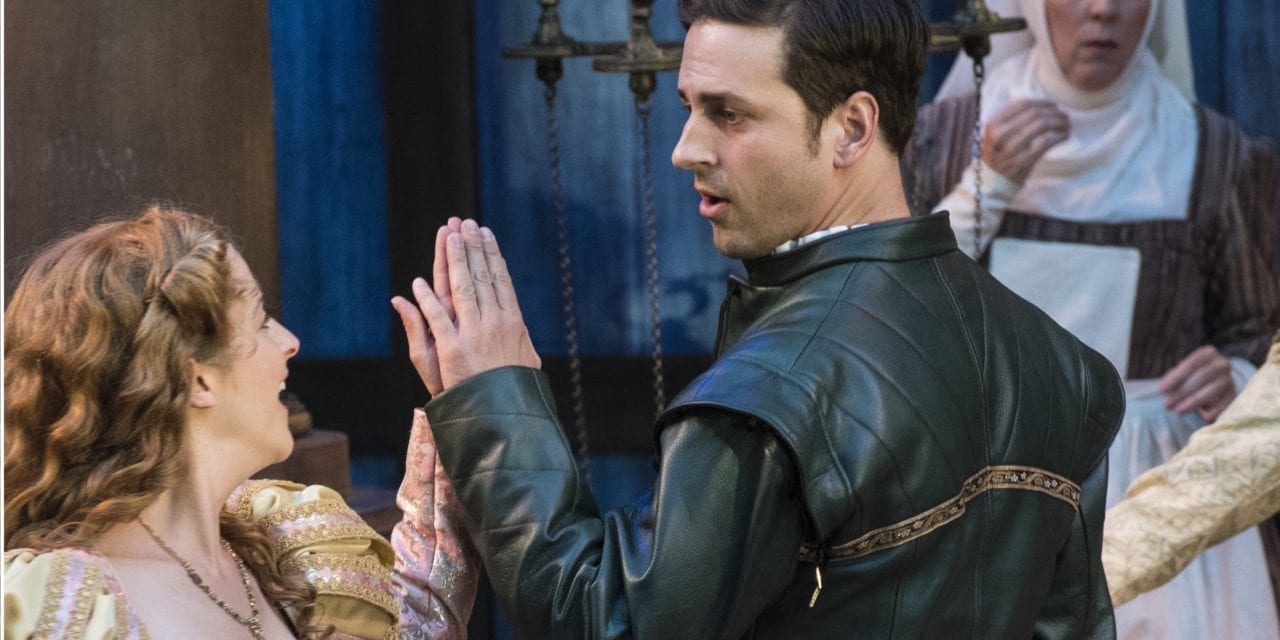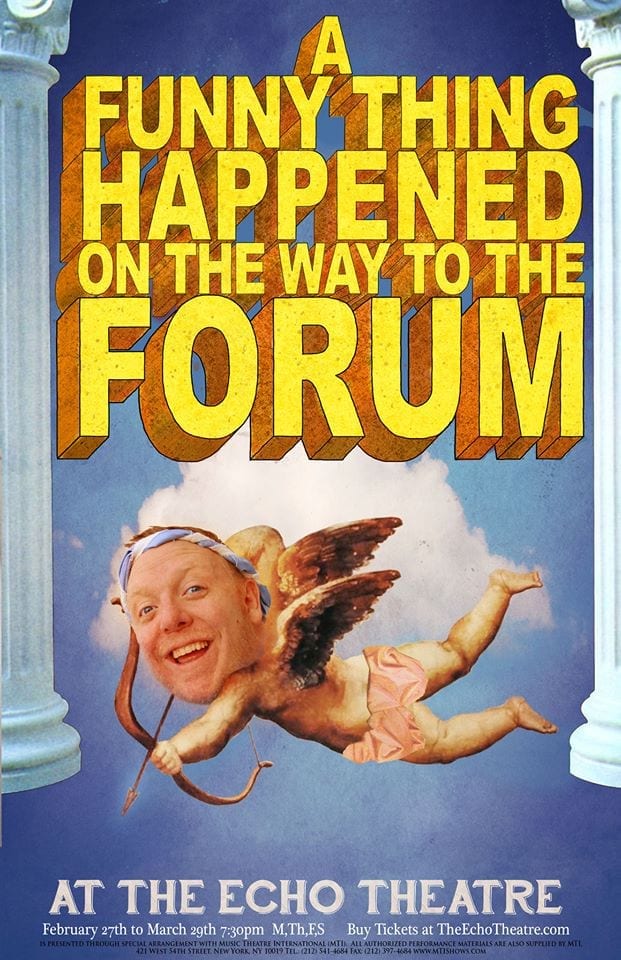CEDAR CITY — Shakespeare in Love is a love letter to William Shakespeare. Packed with references to several works of the Shakespeare canon (including Romeo and Juliet, Othello, Two Gentlemen of Verona, Macbeth, Titus Andronicus, the Henry VI tetralogy, Julius Caesar, The Tempest, Twelfth Night, Hamlet, and the sonnets), Shakespeare aficionados will find plenty of goodies in this show. Yet, it is not necessary to be an armchair literary scholar to enjoy Shakespeare in Love. Almost anyone with a passing interest in Shakespeare’s work can enjoy this backstage comedy.

Show closes September 8, 2017.
Adapted by Lee Hall from the screenplay by Marc Norman and Tom Stoppard, Shakespeare in Love takes place in 1593 when Shakespeare was one of several playwrights in London and it was not at all clear that he would be the most prominent. Facing writer’s block as he works on Romeo and Ethel the Pirate’s Daughter, Shakespeare meets Viola de Lesseps, who becomes his muse. Unbeknownst to him, Viola wants to be the first woman on the English stage, and she dresses as a young man to make her dream come true. The two fall in love, but the relationship is complicated by Shakespeare’s existing marriage and Viola’s engagement to the Earl of Wessex.
What is most refreshing about Shakespeare in Love is Quinn Mattfeld‘s portrayal of a realistic Shakespeare. Today William Shakespeare is an immortal genius, but he wasn’t born famous. Mattfeld showed that Shakespeare—like anyone else working in the entertainment industry—had to find his break, make his name, and deal with setbacks. Mattfeld was excellent at showing Shakespeare’s frustration with his circumstances, especially when Shakespeare’s artistic sensibilities clashed with those around him, such as other actors’ near-worship of Christopher Marlowe‘s work. This frustration never felt repetitive, even when the same arguments occurred again and again in the play (e.g., Burbage’s insistence of including a dog in the new play). Mattfeld also had a profoundly moving moment when Shakespeare had to deal with the news of Marlowe’s murder, which added importance and gravity to the otherwise rollicking story.

Betsy Mugavero (left) as Viola de Lesseps and Leslie Brott as the Nurse. (Photo by Karl Hugh. Copyright Utah Shakespeare Festival 2017.)
Adding to the joy of Shakespeare in Love is Betsy Mugavero in the role of Viola de Lesseps. Her character’s giddy excitement at auditioning in disguise for a play was an endearing moment that won me over to the entire production. Mugavero also perfectly captured the inevitable awkwardness of a woman disguising herself as a man, and I laughed heartily at her reaction in the boat to Shakespeare talking about women like Viola was one of the guys. Viola’s character growth during the course of the play is significant, and Mugavero was equally adept in showing Viola as both a sweet innocent idealist in the beginning and a mature, resilient woman at the end.
The supporting cast was commendable, with extra praise going to Geoffrey Kent, Shane Kenyon, and Leslie Brott. Kent made Wessex an excellent antagonist who wants a marriage of convenience with Viola, and his motivations for opposing Shakespeare were rooted in self-interest, rather than one-dimensional evil. Kenyon had a swagger in his step as Christopher Marlowe, and the character’s cockiness made it clear from his first scene why Marlowe’s presence had appeal to other characters and why he would later be murdered in a bar fight. Finally, Brott was bouncy and sweet as the Viola’s protective nurse, and the quiet maternal relationship the two women shared was a welcomed element in a play that is so overwhelmingly male.

Betsy Mugavero (left) as Viola de Lesseps, Quinn Mattfeld as Will Shakespeare, and Leslie Brott as the Nurse. (Photo by Karl Hugh. Copyright Utah Shakespeare Festival 2017.
Brian Vaughn directed this production like a traditional Shakespeare play, a decision which made the characters’ performance of the premiere of Romeo and Juliet fit seamlessly into the show. Vaughn also has a knack for imitating the aesthetics of Renaissance theatre in his directing, which was particularly apparent in the party scene’s visual symmetricality. I was also impressed by the way Vaughn was able to create any type of mood in the play, from the hypnotic river crossing scene (with its on-stage sound effects) to the frenetic “keep away” scene where the actors attempt to prevent the new manuscript of Romeo and Juliet from getting into a rival company’s hands.
The script is a clever one, though a terrible source for literary history. Many historical individuals are characters in the play, but the story has little in common with actual events. There is absolutely no evidence that any woman appeared on the English stage before the 1660’s. And it is unlikely that Shakespeare struggled with writer’s block while creating Romeo and Juliet because the play is based on translations of an earlier Italian story (which is why it is set in Verona). I recommend that audience members attend the Utah Shakespeare Festival’s literary seminars the following morning to help discern fact from fiction.
Additionally, some readers may question whether they should attend a play adapted from a film that is rated R. Though the play is probably inappropriate for most pre-teens, the production is tame by adult standards. There is some blunt innuendo, and the central plot involves a married man falling in love with another woman. But I can easily think of half a dozen Shakespeare plays with dirtier humor and more sexual content than Shakespeare in Love. If my children were teenagers, I would worry more about them seeing The Taming of the Shrew than Shakespeare in Love.
So, put any doubts to the side and catch this production in Cedar City. Whether you’re fan of comedy or tragedy, Shakespeare in Love has all the ingredients of “A hit, a very palpable hit.”





